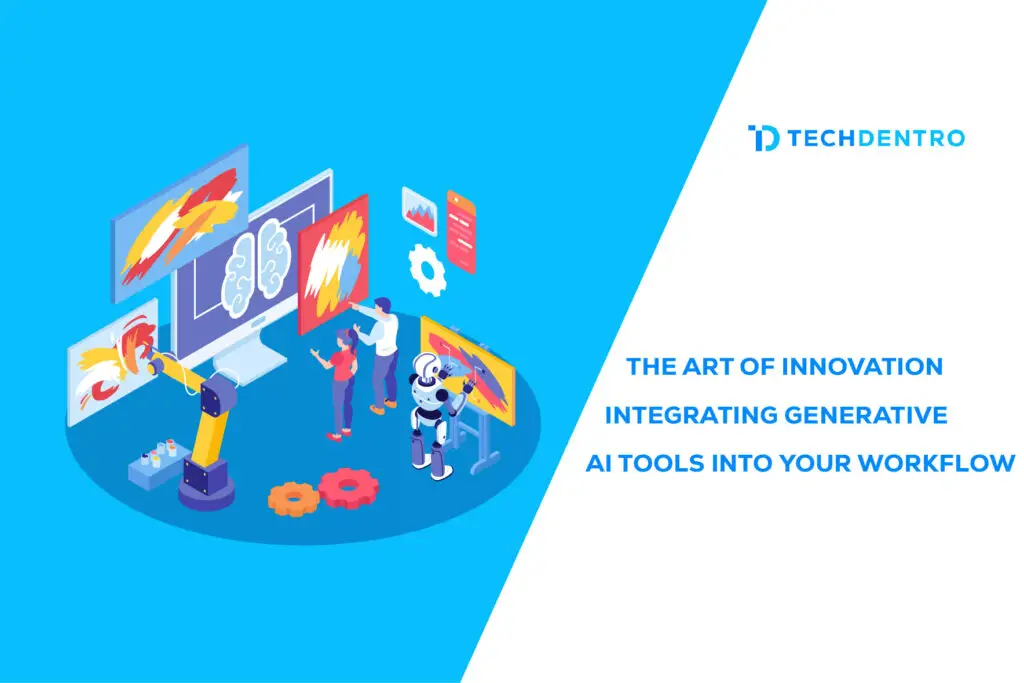Creativity is an essential part of the innovation process. Yet, many companies struggle to balance creativity with rote tasks that suck up time and drain energy.
Employees can concentrate on more critical projects using generative AI tools to automate these repetitive tasks. Here’s how to start using these tools within your workflow.
Create a Workflow
When deciding to integrate AI into your workflow, ensure you’re clear about your goals. Trying every product out there is tempting, but focusing on the tools that best align with your organization’s needs will save you time and reduce risk. For example, if your team designs 3D environments for virtual reality (VR) training, generative AI tools can enhance learning objectives and deliver the realism you need. However, they must be used strategically in a framework driven by educational objectives and a transparent workflow. The AI generative system can help you automate processes by reducing the number of human steps. It’s essential for processes that require high accuracy, such as assessing invoices, purchase orders, or other documents for status updates and changes.
Consider a non-profit that manages a winter Community Market to sell local produce, crafts, and other goods. The non-profit staff must review all applications and verify vendor credentials, including sales tax IDs, certifications, and liability insurance. Then, they must update the Community Market website with vendor descriptions and information. Using generative AI to create content and automate specific steps in the process can eliminate human errors and increase efficiency. But remember to keep a human supervisor in the loop and not let AI take over the decision-making or quality control.
Identify the Tools You Need
Trying every generative AI tool you come across may be tempting. Still, it can also introduce unnecessary risk and confusion. Rather, identify the goals and workflows you want to enhance with a new AI tool before exploring the options. For example, DevOps professionals can navigate a dizzying array of tools when searching for specific logs or observability data. Nag notes, “Querying a bunch of different tools and figuring out how to parse the information for what I’m looking for takes time and doesn’t always work.” Generative AI tools can help streamline these types of processes, so it’s essential to understand your goals before using them. For instance, by examining trends in previous user queries, a machine-learning model can assist engineers in locating the appropriate metrics or logs for their inquiries.
Additionally, some generative AI tools can provide developers with suggestions for code snippets, allowing them to speed up the development process. And, for UX researchers, generative AI can help simplify the process by providing unexpected visual interpretations and inspiration. Another way generative AI can make workflows more efficient is by automatically translating legacy code to modern languages. It can help organizations modernize their technology by reducing the costs and complexities associated with upgrading to cloud-native deployments or re-platforming on microservices.
Automate Your Processes
As AI tools get more sophisticated, they can be used to automate processes that take up a significant amount of an employee’s time. These tasks include ad copy creation, writing and editing, data mining, and other repetitive data processing activities. The goal is to free up time for employees to focus on more high-value, higher-margin work. Generative AI works differently than traditional AI algorithms, which use predefined rules to process data and produce results. In contrast, generative AI models are more effective for tasks involving NLP and call for creating content such as text, images, or audio. For example, a generative AI tool could help improve communication by automatically translating and adjusting text into different languages. Or, a generative AI voice generator could simulate someone’s tone and emotion, potentially accelerating knowledge transfer in the workplace.
These applications are a small taste of the possibilities offered by generative AI. The technology can produce product prototypes quickly, create a first draft of a marketing campaign, or tweak existing projects for efficiency. Companies must understand the possible hazards associated with these tools, though. For instance, they must monitor their use to prevent “shadow AI” and avoid hallucinations, factual errors, bias, and plagiarism. They also need to understand that generative AI output can have an uncanny accuracy and double-check the quality of AI-generated content and code.
Identify Your Goals
When implementing generative AI tools into your workflow, it’s essential to start by identifying what you want to accomplish. Trying every new tool is easy, but this creates confusion and introduces unnecessary risk. You can streamline the process by breaking down your goals into smaller components and working through them in order of priority. For example, if you want to automate your content creation and marketing materials, it’s best to focus on content generation first. It will allow you to test the tools’ capabilities while ensuring they deliver high-quality results. Once you’ve identified the most effective tools, it’s time to incorporate them into your workflow. It may require some initial training for your human team. You’ll need to teach the tools to understand and interpret your data and provide the most accurate results. Additionally, you’ll need to ensure that your team is well-documented and that the tools have access to all the necessary information.
Any innovation process must succeed if you are prepared to take chances and step outside your comfort zone. Creativity requires experimentation, and it’s often different from what you expect.
